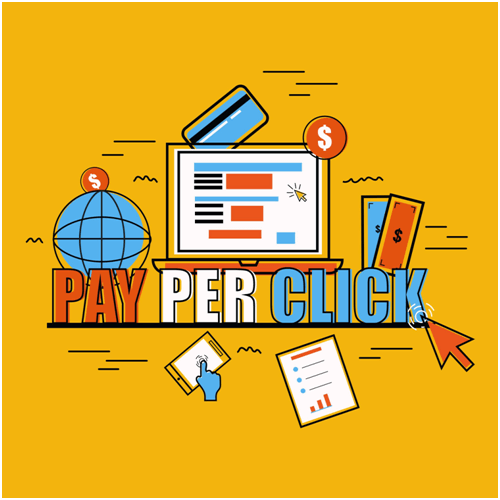You may have heard the term Pay-Per-Click or PPC before, but you might not know what it means and how it works. PPC marketing can help you target more specific audiences, drive traffic to your website, and help increase sales by using tools like Google AdWords, Facebook Ads, Bing Ads, and Twitter Ads. Keep reading to learn more about PPC marketing and how you can use it to grow your business online!
Pay-Per-Click – Overview
Before diving into an analysis of Pay-Per-Click and its place in your campaign, let’s first discuss what PPC marketing is and why it can be such a powerful online marketing tool. Pay-Per-Click (PPC) marketing, also known as Pay-Per-Impression or Cost per Thousand Impressions, is a form of Internet marketing that involves paying for advertisement placements on search engines or advertising networks. It allows businesses to pay only when someone actually clicks on their ad. A PPC company works by having advertisers bid for placement above or below search results or other advertisements on search engine result pages (SERPs). In general, PPC ads are most effective when they appear higher in SERPs.
Pay-Per-Click – How Does it Work?
Pay-per-click marketing is one of the most popular ways of digital marketing because it’s easy to measure results and has a predictable return on investment. When you set up a PPC campaign, you’ll choose how much you’re willing to pay for each click that goes through. You don’t have to pay until someone clicks on your ad, which means there’s no waste if your audience isn’t responding. This puts all the control in your hands and lets you see exactly what ads are performing well in order to maximize your ROI over time.
PPC Campaign Structure
Google AdWords and Facebook Ads allow you to target your ideal customer based on their demographics, location, interests, and more. With such granular targeting options, it’s no wonder pay-per-click advertising is one of marketing’s biggest growth areas. But success with PPC advertising doesn’t happen overnight—it requires a detailed game plan and precise execution. So we decided to create a step-by-step guide for anyone looking to get started in PPC: Welcome to The Ultimate Guide To Pay Per Click Marketing!
PPC Landing Page Optimization Tips
Paid search is one of advertising’s most popular options. That said, it can be difficult to get right. How do you make sure that every click a user makes on your paid search campaign translates into a conversion? The first step is choosing your keywords carefully and defining what type of visitors you want to bring in. You then need to go through each stage of building out your campaign, from setting up ad groups, landing pages, and bids, to analyzing performance. After that, there are specific things you can do at each stage of the process (including keyword research) in order to optimize your PPC campaigns for top performance. Further, you can get services to optimize your website, we recommend you to hire a professional company such as Website design Bromyard. Here are some simple steps for optimizing PPC landing pages for maximum conversions.
PPC Ad Copy Optimization Tips
The first step to running a successful PPC ad campaign is to define your goals. That seems obvious, but most businesses aren’t clear on what they hope their ads will achieve. If you don’t have specific metrics in mind, it’s hard to know if your campaign is a success or not. For example, you might want more people to visit your website; that’s an excellent goal! But how many visitors are enough? Are they unique visits, repeat visits, or returning customers? The answer determines how much money you should spend per visitor and which ad types and platforms you should focus on. Generally speaking, paid ads will only be successful if you can track a direct correlation between them and increases in sales or traffic—there are no shortcuts!
How to Setup a Successful PPC Advertising Campaign?
The first step to a successful pay-per-click marketing campaign is setting up your account, which can be done in a few simple steps. Once you’ve completed those steps, it’s time to set your budget. The cost of each PPC ad varies depending on your industry and location. Your goal is usually to pay as little as possible for relevant clicks that lead users through your sales funnel. That said, you want enough budget left over for testing different ads and landing pages. Depending on what sort of services or products you are offering, your budget should range from $50/day – to $500/day, but remember that you might spend more than that if nothing works at first.
Final Thoughts
PPC advertising is a form of online marketing that allows companies to pay every time their advertisement is clicked. In order for your advertisement to be paid for, it must appear on search engine results pages, display network sites, or text ad networks. Google AdWords and Facebook ads are examples of PPC advertising. The benefits of pay-per-click marketing are immense as you are only paying when people actively engage with your ad and actually make a purchase or convert leads into sales. When done right, PPC marketing can be extremely cost-effective and ROI positive which makes it well worth exploring even if you’re not looking for an immediate return on investment.
Read more articles on Businessfig.







